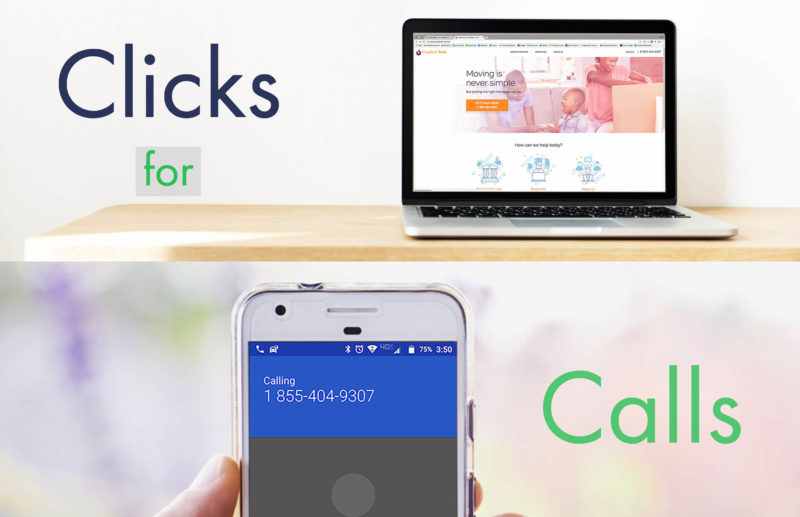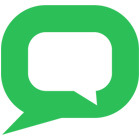Driving calls with PPC: 5 mistakes most search marketers make
Most search marketers want the same thing out of their pay-per-click campaigns: driving conversions up and cost per conversion down. Things get a little more complicated when the goal of your PPC spending is to drive calls to your business. Using PPC to drive calls is a common tactic in any considered purchase category where […]
Most search marketers want the same thing out of their pay-per-click campaigns: driving conversions up and cost per conversion down. Things get a little more complicated when the goal of your PPC spending is to drive calls to your business.
Using PPC to drive calls is a common tactic in any considered purchase category where the cost of the product or service tends to exceed $500 and the stakes are high. Financial services, insurance, travel and home services are just a few industries where conversions frequently happen over the phone, and marketers spend a lot of time and money driving high-intent shoppers to call. In fact, Invoca surveyed banking customers and found that 93 percent of consumers who took out a loan of $100,000 or more made at least one call while evaluating options.
The problem is, there are many potential pitfalls for marketers who drive prospects across channels, particularly from online to offline, digital to the phone. Here are five of the most common mistakes search marketers make when driving calls with PPC.
Driving support calls with marketing budget
This question keeps many search marketers up at night: “What if I’m spending thousands of dollars of our paid search budget to drive calls to the support call center?” It happens more often than you think. When someone who needs help searches for your company on Google, they’ll call the first number they see. Which could be the number in your paid search ad that’s supposed to be driving conversions, not support calls.
If you’re worried about the expense of handling those calls, consider this: For businesses in considered purchase industries, bidding on high-value keywords like “life insurance” can drive prices to $50 or more per click. This not only means that the marketing team is taking a big financial hit, it negatively impacts the customer experience because their calls are also going to the wrong place. They then have to get transferred or call a new number to get help. This upsets customers, marketing budget is burned, and everyone loses.
To put this in perspective, a leading US insurer that recently implemented Invoca’s call intelligence solution found that more than 50 percent of inbound calls driven by paid search were support inquiries, not sales opportunities.
In order to avoid this scenario, you have to break down the call center-marketing data silo. Marketing needs to be able to act on call-tracking data now, not a month from now. The best way to do this is by leveraging advanced artificial intelligence and natural language understanding (NLU) technology to speed up and digitize the feedback loop between the contact center and the marketing teams. Instead of listening to calls manually, marketing can tap into real-time voice analytics, automatically understand caller behavior and intent and integrate those insights to digital advertising platforms. This shared data set establishes a foundation for improved cooperation between marketing and contact center teams.
Not designing ads to drive calls
Just popping a phone number into a paid search ad isn’t enough to drive calls that result in conversions. Besides siloed data, poor ad design is one of the most common reasons your PPC is driving low-quality calls.
To design paid search ads that drive high-intent shoppers to call, start by using language in your ads that makes it clear why the person should call. For example, if you’re an HVAC installer and your goal is to get more estimate appointments, say “Call Now for a Free In-Home Estimate!” If you are a mortgage broker trying to give more rate quotes, say “Call for a No-Risk Rate Quote Today.”
Casting a wide net will only help you catch bad calls. Remember that with call-only ads you just have two description lines and a URL to work with and no headline. Focus on making your copy concise and aligned with your goals. To get more out of the space, you can also use the URL to display a call to action or other information.
Failing to optimize campaigns for calls
This one seems obvious, but you have to remember that digital campaigns that drive calls require a different approach from campaigns that drive clicks. Dig into reports and look at the top keywords that are driving phone calls. To make sure you are homing in on high-quality calls, don’t just count the number of calls. Look at qualifiers like call duration to nail down conversions, then optimize your bids to ensure keywords generating the most quality calls will get top ad position.
Additionally, you may want to consider upping your PPC spend. Keep in mind that calls convert at 10x the rate of clicks and are typically much more valuable conversions. A higher spend on your call campaigns could be worth the extra investment.
Missing out on peak times
Call volume for most businesses fluctuates throughout the day and night. People probably won’t call for a mortgage quote at 2 a.m. on Saturday, but they will light up the phones at 9 a.m. on Monday. Analyze call data in Google AdWords, Google Analytics, or a third-party tool to spot peak days and times for phone calls. Then, confirm that these are quality calls from prospects. This can be done by looking at call duration or by using a call intelligence platform to get deep conversation analytics so you know exactly what happens on each call. From there, you can increase bid modifiers to make sure your call ads appear during those times.
No visibility into calls
How long does it take your marketing organization to get actionable data from a call? A week? A month? Never? This is the biggest blind spot that many digital marketers who need to drive calls face. You put a massive amount of spend into paid search to drive calls, but the second a customer goes offline to the phone, you have no idea what happens, or it’s days or weeks before you get data to fill in the blanks. Which, in your world, might as well be a decade.
While you may eventually be able to check the box for that conversion being driven by a digital campaign, you probably have no data on keywords and nothing to work with on retargeting. That means you could be dumping budget into ads and keywords that don’t work, turning off ones that do work and wasting money retargeting customers who have already converted on the phone. This isn’t just bad for your marketing budget, it’s a bad experience for your customers.
Phone conversations provide a wealth of insight about your customers, their needs and preferences. Call intelligence solutions like Invoca fill in that marketing blind spot between digital and the phone call, giving you the data you need to optimize campaigns and keywords and to precisely retarget (or suppress) customers depending on what happened on the call. This allows you to retarget people based on the call outcome by syncing call data with your retargeting campaigns and RLSAs (retargeting lists for search ads). This way, you can retarget unconverted callers with a special offer, or converted callers with an upsell offer.
Either that, or you guess. And I don’t know a lot of marketers who rely on guessing these days.
Download the e-book “How to Increase Calls from Paid Search: 10 Guaranteed Tactics” to learn how to capture key caller data and optimize your campaigns, bidding and targeting strategy and increase marketing ROI.
Related stories


